The keel of India’s first Indigenous Aircraft Carrier (IAC) was laid by the Raksha Mantri at Cochin Shipyard on the 28th of February 2009. This major milestone of the IAC project underlined the commitment of the nation to acquire the capability to design and build these versatile and capable warships.
Credit for the achievements attained so far must be given to several organizations; to the Naval Staff who conceived and obtained approval for the project, to the Ministry of Defence who appreciated the need and gave the ‘go-ahead’, to the Indian Navy’s Directorate of Naval Design, who, despite shoestring resources and limited previous experience, evolved the design and are managing the construction programme successfully overcoming several obstacles that come their way, and not least, to the shipyard for showing flexibility and resourcefulness in transforming drawings and plans into what, in due course, will become a potent warship, giving the nation the capability to project power and exercise sea control over its vast maritime zone of interest.The advent of seaborne aviation came close on the heels of heavier than air flight. Initially merchantmen and conventional warships were converted to operate aircraft. World War II and the ensuing Cold War provided the impetus to technical developments which have greatly improved the carriers’ operational capabilities. While several nations have acquired and operated aircraft carriers, only a handful have successfully designed and constructed these ships. Historically, the United States, Britain and Japan had constructed the largest numbers up to the end of WW-II, in the wake of which, construction of carriers was suspended in Japan.
Also read: Modular design and construction of warships
In the post-war era, France, Russia (Soviet Union), Italy and Spain have also designed and constructed aircraft carriers and helicopter carriers suited to their requirements and for export. Aircraft carriers have become the primary means of launching and prosecuting expeditionary operations in times of conflict, and convey a powerful diplomatic message in times of peace. Their versatility makes them the most effective means of providing relief in the event of natural calamities.
New Designs
New aircraft carrier designs are presently being developed by the United States and by Britain. The US programme, with its genesis in the CVNX concepts, later evolved into the CVN 21 class, the lead ship of which is presently under construction and is expected to enter service in 2015 as CVN 78, USS Gerald R Ford. While the hull will retain the features of its predecessor “Nimitz” class, the ship will embody a large range of novel new technologies including the power plant, ship systems, catapults and arresting gear, flight deck arrangements, weapon handling systems and structural protection. The British programme was originally conceived as an Anglo-French project, CVF/PA2, with the UK building two ships and France a single one, to a substantially common design.
However, the French discontinued cooperation on the project in 2008 and in 2009 ordered studies on different ship architecture and an alternative propulsion system. The CVF project, at present, remains exclusively British, known as the “Queen Elizabeth II” class. The future French carrier design is reportedly being evolved; taking into consideration the experience gained during the operation of the Charles de Gaulle, and is expected to be of a larger size and displacement than the CVF, carrying a more capable air wing and with a greater degree of self protection.There are media reports that Russia and China are engaged in developing designs for aircraft carriers, but few details are available. The CVN-21 and CVF programmes undoubtedly embody the biggest aircraft carrier design efforts in recent times, with several new concepts and technologies being incorporated.
India’s maiden effort would, logically, be followed by a successor, ‘IAC-2’ in due course. The question to be addressed at this stage is, “what should be the design of the new ship?”Should the design of IAC-1 be repeated or should a new design be evolved.The first option has many factors in its favour- low technical risk, opportunity to plough back the ‘lessons learnt’ from IAC-1, standardization of operating procedures and of equipment and systems and commonality of shore support facilities.
Also read: SHIVALIK: India’s New Generation Warship
A new design, on the other hand, would provide an opportunity to incorporate new technologies which enhance the combat capabilities and operational efficiency of the ship to meet the challenges of the future. Both views have logical appeal.
In view of the high cost and long gestation period of such projects, it would be appropriate to examine the factors driving the design of aircraft carriers and to review the new concepts and technologies being incorporated in designs being presently developed, in order to arrive at a judicious decision.Design and construction of aircraft carriers is a complex and challenging endeavour. The design must balance differing, and often conflicting requirements of structural strength, stability, seakeeping, survivability, powering and propulsion, electrical power generation and distribution, air operations and aircraft support, maintenance, ergonomics, complementing and habitability.The construction activity presents a challenge to the shipbuilder and requires continual adaption and innovation.
Air Wings – The Raison d’Etre
The size, composition and characteristics of the carrier’s air wing and its envisaged operational role is undoubtedly the primary factor governing the design of the ship. The air wing is invariably a mix of different types of air vehicles which would include fighters for strike and combat air patrol, and helicopters for various roles – search and rescue, anti submarine warfare, airborne early warning (AEW), commando operations and utility.
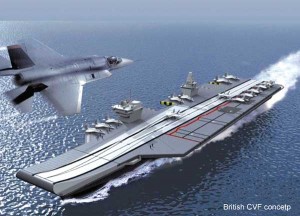 Navies are also operating larger fixed wing AEW aircraft (Lockheed Martin E-2B). Tilt-rotor craft (V-22 Osprey) have also appeared on the scene. The ship would be designed for a 50+ year lifespan during which the air wing could well undergo two or even three ‘generational’ changes. Unmanned Combat Air Vehicles (UCAVs) are also expected to be embarked on aircraft carriers to expand the ships’ operational capabilities. The ship’s design has, therefore, to be sufficiently adaptable, particularly in respect of aviation facilities and mission systems so as to enable the ship to effectively operate aircraft which could be considerably different from those initially embarked.Therefore, emerging technologies which are finding a place on the two largest aircraft carrier programmes currently being executed, i.e. the US CVN-21 and the British CVF do merit serious study and consideration.Sortie RateAn accepted ‘figure of merit’ of a carrier’s design is the ‘sortie rate’ that it can generate i.e. the rate at which it is possible to launch aircraft, recover them on completion of their missions and re-launch them after refueling, rearming and completing mandatory maintenance/preparation. The aircraft launch and recovery systems, and the systems for movement of armaments from the magazines to the aircraft have a major bearing on the sortie rates that can be achieved.
Navies are also operating larger fixed wing AEW aircraft (Lockheed Martin E-2B). Tilt-rotor craft (V-22 Osprey) have also appeared on the scene. The ship would be designed for a 50+ year lifespan during which the air wing could well undergo two or even three ‘generational’ changes. Unmanned Combat Air Vehicles (UCAVs) are also expected to be embarked on aircraft carriers to expand the ships’ operational capabilities. The ship’s design has, therefore, to be sufficiently adaptable, particularly in respect of aviation facilities and mission systems so as to enable the ship to effectively operate aircraft which could be considerably different from those initially embarked.Therefore, emerging technologies which are finding a place on the two largest aircraft carrier programmes currently being executed, i.e. the US CVN-21 and the British CVF do merit serious study and consideration.Sortie RateAn accepted ‘figure of merit’ of a carrier’s design is the ‘sortie rate’ that it can generate i.e. the rate at which it is possible to launch aircraft, recover them on completion of their missions and re-launch them after refueling, rearming and completing mandatory maintenance/preparation. The aircraft launch and recovery systems, and the systems for movement of armaments from the magazines to the aircraft have a major bearing on the sortie rates that can be achieved.
Launch and Recovery Systems
Two major systems used for launching fixed wing aircraft are the catapult and the ‘ski-jump’ or launching ramp. In either case the aircraft has to be designed for the type of launch, i.e. the structure and undercarriage has to be designed to withstand the dynamic loads generated by the particular launching system. Catapult launch systems do provide the flexibility of undertaking launch and recovery of fixed wing aircraft simultaneously, on angled deck carriers and for providing additional launch spots without any constraint on the configuration (all up weight) of the aircraft being launched in any condition. The implication is the additional weight, volume and energy requirements of the catapult launch system must be accommodated in the design.
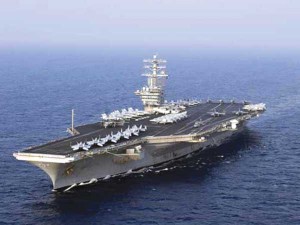 Invariably, installation of jet blast deflectors at the launch spots would also be necessary in order to protect the aircraft ed or waiting behind. Catapults are fitted on US Navy carriers and on the French carrier, Charles de Gaulle. These are operated by steam, which is readily available on conventional and nuclear powered steam turbine propelled ships. Installation of dedicated steam generation equipment would, however be necessary in case steam catapults are to be installed on carriers propelled by gas turbines. Available steam catapults can launch aircraft weighing up to 32 tonne.
Invariably, installation of jet blast deflectors at the launch spots would also be necessary in order to protect the aircraft ed or waiting behind. Catapults are fitted on US Navy carriers and on the French carrier, Charles de Gaulle. These are operated by steam, which is readily available on conventional and nuclear powered steam turbine propelled ships. Installation of dedicated steam generation equipment would, however be necessary in case steam catapults are to be installed on carriers propelled by gas turbines. Available steam catapults can launch aircraft weighing up to 32 tonne.
In order to limit the acceleration rates of lighter aircraft, the rate of opening of the ‘launch valves’ is modulated, but there is a limit below which lighter aircraft cannot be launched. The Electro-Magnetic Aircraft Launch System (EMALS) developed by the United States for the new design CVN-21 class carrier, dispenses with the need for steam and instead uses linear induction motor technology, which removes the constraint on aircraft weight.
However, the electrical power requirements are greatly increased by the installation of EMALS, which needs to be catered for in the design of the ship, as is being done on the CVN -21 class. Trials of EMALS are in progress at Lakehurst NJ USA. Four EMALS are planned to be installed on CVN- 78 at a ‘latest’ reported cost of 1292.6 million USD.
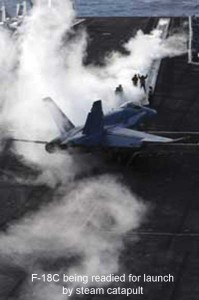 The ski-jump (or trampoline in Russian parlance) is a British invention, which imparts dynamic lift to the aircraft, thereby allowing an increase in performance/endurance of ‘short take-off’ aircraft, as embarked on INS Viraat, and on the carriers in service with European (except French) and the Russian Navy.
The ski-jump (or trampoline in Russian parlance) is a British invention, which imparts dynamic lift to the aircraft, thereby allowing an increase in performance/endurance of ‘short take-off’ aircraft, as embarked on INS Viraat, and on the carriers in service with European (except French) and the Russian Navy.
The ‘Queen Elizabeth II’ class carriers being built for the British Royal Navy, the IAC-1, and INS Vikramaditya (ex-Admiral Gorshkov) will also have the ski-jump. The Mig 29K aircraft, planned to be operated from IAC-1 and INS Vikramaditya, are designed for ski-jump assisted Short Take Off But Arrested Landing (STOBAR) . Interestingly, while the short take-off vertical landing (STOVL) version of the Lockheed Martin Lightning II Joint Strike Fighter, the F35B, planned for operation on the CVF is ski- jump compatible, the CVF is also being ‘fitted for but not with’ catapults and arrester gear, so as to retain the option to operate CATOBAR (catapult assisted take-off but arrested landing) aircraft in the future.
Fixed wing aircraft, other than aircraft designed for vertical landing are brought to a stop within a short distance after landing on the deck by arrester gear. Presently used designs use wire ropes rigged athwartship at the aft end of the landing runway, connected to a hydraulic ram through cables and pulleys. The aircraft engages one of the wires with its tail hook and is brought to rest in a short distance. The gear is designed for a rather limited range of aircraft weights.
Also read: How India can acquire great power status?
A new design Advanced Arresting Gear (AAG) being developed for the US CVN-21 and planned for retrofitting on all Nimitz class carriers, replaces the ram with energy absorbing water turbines with an electromagnetic braking and rewind system (induction motor), which enables fine control of the arresting forces. The design also incorporates a lighter synthetic cable instead of the existing wire ropes.
The new design catapult and arresting gear provide finer control of the accelerating and decelerating forces during take off and landing, thereby enabling reduction of impulse loads during these operations, with consequent improvement in fatigue life of the aircraft structures.
Turnround Time
The rate at which aircraft are re-fuelled and re-equipped with armaments, i.e. bombs, rockets, missiles, gun ammunition, and readied for re-launch on completion of a sortie, has a marked effect on sortie generation rate. Whereas refueling arrangements at various locations are relatively easy to provide, safety requirements, particularly because of the sensitivity of the air weapons to detonation, dictate that armaments are taken out of the magazines shortly prior to loading on the aircraft and are not kept in exposed locations for long duration.
The magazines are several decks below the flight deck, and although existing carriers are equipped with ammunition lifts, these are cable operated and useful only for vertical movements. Horizontal movement has to be effected manually, which is manpower intensive and time consuming. Moreover, the actual loading of bombs and missiles onto the aircraft is a precise operation, which is also being done manually at present. New technologies are under development to mitigate this problem by employing sophisticated automation.
For the CVN-21, linear induction motor based weapons elevators are under development with a lift capacity of 22 tonne. These would transport bombs and missiles to a weapons area just below the flight deck, where ‘aircraft size loads’ would be prepared. These would be brought up to the flight deck when required, using short distance ‘express’ elevators. For assisting movement of heavy loads on deck, a derivative of the Compact Agile Material Mover (CAMM) is being developed. The CAMM, employing Human Amplification Technology (HAT), a spin-off of the nuclear industry can carry 5 tonne loads and requires a single operator.
Movement is effected by a device akin to a powered furniture castor wheel, and inertia and contact forces are fed back to the operator’s single lawnmower handle-like operating device, which is fixed to the vehicle.
The vehicle can also hold its position on a 30deg. slope. HAT technology is also used to assist handling of armaments. A powered lifting arm responds directly to push, pull and twist forces applied by human hand to the load carrying head and feeds back resistance and contact forces. Positioning up to sub-millimeter accuracy is reported. In the case of the CVF, automated all-electric commercial warehousing technology has been adapted to develop the ‘Highly Mechanised Weapon Handling System’ (HMWHS), which is expected to reduce manpower requirements and speed up the movement.Designers of new carriers focus on the optimal use of upper deck ‘real estate’ to minimize the turn round time and to improve ergonomics of flight deck operations. Differing solutions have emerged in the case of the CVN-21 and the CVF. The island of the CVN-21 is smaller than that of the Nimitz class, and is positioned further aft.The CVF, on the other hand, will have two islands, the forward island being used for ship operations and the aft for air operations, the arrangement also providing dispersion of the ‘sponson-installed’ gas turbines In both cases the lifts are positioned on the deck edge, to avoid interference with air operations.In order to minimize the need to move aircraft on deck for their turn round, a ‘pit stop’ arrangement is provided, wherein all services are located grouped around the spots where aircraft are positioned for turn round, thereby reducing the time required for this evolution. It has been stated that simpler deck handling is the single biggest factor in improving sortie rates.
Structures
Structural design features of aircraft carriers need to ensure strength, stability and survivability with particular attention to structure in the vicinity of large openings necessary for aircraft lifts. An important task to be addressed by the designer is to ensure stability, with margin for future growth, while, at the same time, ensuring that ship motions are restricted. Structural protection of mission critical spaces and ammunition magazines is receiving attention in the design of CVN-21, with reports indicating that Dynamic Armour Protection System (DAPS), similar in principle to electromagnetic reactive armour used for land vehicles, is being incorporated.
Carrier Propulsion
Aircraft carriers were traditionally propelled by steam turbines. The steam, produced by fossil fuel fired boilers, being used for catapult operation as well. The Indian Navy’s existing carrier, INS Viraat, is steam propelled, as is the INS Vikramaditya, presently undergoing repair and conversion in Russia. The first nuclear powered aircraft carrier, USS Enterprise, was commissioned in 1961, and this mode of propulsion has been retained for all the ‘super’ aircraft carriers of the US Navy, (so called because of their large displacement of around 100,000 tonne). The nuclear steam plant of the Nimitz class produces 260,000 bhp (194 MW) and propels the ship at 30+ knots.
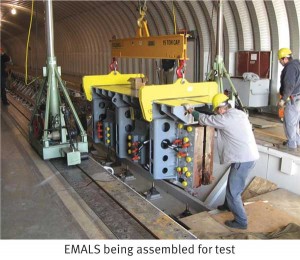 The high cost, (first and through life) of nuclear propulsion is offset by the ability of these carriers to embark greatly increased quantities of aviation fuel and ordnance for their large air wings in the internal volumes, that would have otherwise been utilized for the ships’ fuel, thereby increasing their operational endurance. The reactors planned for the CVN-21 are of a new design, with lower manning and maintenance requirements, with no refueling required for the life of the ship. Nuclear propulsion is not however, restricted to large carriers only. The French Navy’s Charles de Gaulle displacing 40,600 tonne has a compact nuclear steam plant capable of propelling the ship at 27 knots.
The high cost, (first and through life) of nuclear propulsion is offset by the ability of these carriers to embark greatly increased quantities of aviation fuel and ordnance for their large air wings in the internal volumes, that would have otherwise been utilized for the ships’ fuel, thereby increasing their operational endurance. The reactors planned for the CVN-21 are of a new design, with lower manning and maintenance requirements, with no refueling required for the life of the ship. Nuclear propulsion is not however, restricted to large carriers only. The French Navy’s Charles de Gaulle displacing 40,600 tonne has a compact nuclear steam plant capable of propelling the ship at 27 knots.
Nuclear propulsion plants do not require trunks to be provided for supplying combustion air to boilers, nor is there any requirement for an exhaust funnel; these would otherwise intrude into deck space within the ship, particularly in the hangar and flight deck. Clearly therefore, should budgetary support and availability of technology not be an issue, taking into consideration that technological advances have reduced the operating complexity and costs and have also enhanced the reactor core life, nuclear propulsion remains a serious choice for aircraft carrier propulsion.
The high maintenance loads associated with the operation of conventional, fossil fuel fired steam plants, and their relatively low cycle efficiency, led to the consideration of alternate means of propulsion for aircraft carriers by navies who did not or could not consider nuclear propulsion as an alternative. The aero derived marinised gas turbine, whose design has matured over the years, offers a compact high power source, with higher fuel efficiency than conventional steam plants. The marine gas turbine made its debut for aircraft carrier propulsion on the British Invincible Class carriers, the lead ship of which commissioned in 1980. This mode of propulsion has since been selected by the has been selected by the Italian Navy for its carriers Giuseppe Garibaldi which commissioned in Sep 85 and for the Cavour, (in combination with a diesel electric plant) which commissioned in Mar 2008, by the Spanish Navy for the Principe de Asturias, and by the Thai navy ( in combination with diesel engines) for the Chakri Naruebet. India’s IAC-1 will be powered by 4 General Electric LM 2500 Gas Turbines, sourced from Hindustan Aeronautics Ltd. These will drive the 40,000 tonne ship at a maximum speed of knots.
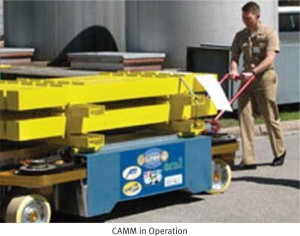 A factor to be considered in gas turbine installations with turbines installed in machinery compartments located deep within the ship is the need for careful routing of the large combustion air downtakes and exhaust gas uptakes, from the upper decks to the turbines, in order to minimize pressure drops and also to avoid interference by the ducts in movement of aircraft on the hangar and flight decks.
A factor to be considered in gas turbine installations with turbines installed in machinery compartments located deep within the ship is the need for careful routing of the large combustion air downtakes and exhaust gas uptakes, from the upper decks to the turbines, in order to minimize pressure drops and also to avoid interference by the ducts in movement of aircraft on the hangar and flight decks.
The British Royal Navy has also selected gas turbines as the main power source for the CVF, after discounting nuclear propulsion on grounds of cost. The installation is a new development which consists of two Rolls Royce MT 30 turbines, each developing 36MW, coupled to high capacity electrical generators, in an Integrated Electric Propulsion (IEP) configuration.
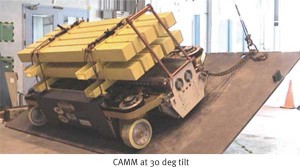 The turbines are located in sponsons beneath each of the two islands. Electric power is also supplied by 2×11 MW and 2×9 MW diesel generator sets. The ship is propelled by four electric motors, each of 20 MW, two on each shaft which are expected to propel the 65000 tonne ship at speeds of 25+ knots. The propulsion arrangement has been finalized after several iterations, taking into account variable speed requirements for carrier operations and through life costs.
The turbines are located in sponsons beneath each of the two islands. Electric power is also supplied by 2×11 MW and 2×9 MW diesel generator sets. The ship is propelled by four electric motors, each of 20 MW, two on each shaft which are expected to propel the 65000 tonne ship at speeds of 25+ knots. The propulsion arrangement has been finalized after several iterations, taking into account variable speed requirements for carrier operations and through life costs.
The choice of propulsion for an aircraft carrier requires careful consideration of available options, the associated technical risks and the initial as well as through life costs. Once the propulsion plant is finalized, there is no going back, because change of propulsion in mid course would involve prohibitive costs and may well ‘sink’ the project. For situations where the capability and experience of domestic industry in the field of naval propulsion is low, and R&D efforts in this field are limited, selecting propulsion solutions incorporating well proven and matured technologies would be prudent, in order to minimize risk and cost. The Indian Navy’s track record in this regard has been correctly conservative.
Way Ahead
On the other hand, reaching for leading edge technologies would not be out of place in respect of deciding the composition and capabilities of the air wing and the ship’s C4I systems, including the main radars, because these need to defeat the opposition ‘on the day of the match’. Investment in R&D effort in these areas is justifiable. A collaborative approach for development of say, combat systems and even nuclear propulsion with capable and reliable partners, on a cost sharing basis would mitigate technical and financial risk, and therefore merits consideration.
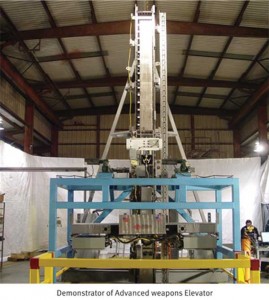 The process of designing aircraft carriers, as already stated is complex and unless a rigorous and disciplined approach is followed to take timely and rational decisions on key issues the design process gets stalled and solutions would not crystallize. The time frames and issues involved in the design process are presently known to all involved in the IAC-1 project. The decision – making process for the design of IAC-2 would benefit from an early start, with feasibility and costing studies, as well as simulations for complex activities, such as Flight Deck Management, being commissioned as early as possible for deciding key issues.
The process of designing aircraft carriers, as already stated is complex and unless a rigorous and disciplined approach is followed to take timely and rational decisions on key issues the design process gets stalled and solutions would not crystallize. The time frames and issues involved in the design process are presently known to all involved in the IAC-1 project. The decision – making process for the design of IAC-2 would benefit from an early start, with feasibility and costing studies, as well as simulations for complex activities, such as Flight Deck Management, being commissioned as early as possible for deciding key issues.
Rational decisions need to be arrived at on important issues such as aircraft stowage and maintenance, hangar size and the extent of on-board maintenance facilities to be provided. Wherever the availability of new development systems has an element of uncertainty, a ‘Plan B’ must be in place, as a fallback, so that progress in the design and construction is not stalled. The design itself would need to be progressed with an eye on the future, particularly in respect of the next generation air wing, in order to ensure that the carrier remains role-worthy over its designed life.
Besides the issue of design, another important decision would be to finalise the location where the next carrier would be built. Certainly, due consideration needs to be given to the infrastructure already created and the experience gained on IAC-1. Depending on the size of the next carrier, shipyard facilities may need to be augmented, or, alternatively, building at multiple locations may need to be considered. Project management structures, which allow ploughing back of expertise acquired and lessons learnt, and are not subject to loss of continuity also need to be envisaged, employing, if required, ‘out of the box’ approaches. Although the delivery of IAC-1 is still some time away, it is by no means too early to initiate the processes necessary to come to an early decision on the major parameters and way ahead for IAC-2. Considering the magnitude of the project, a dedicated project group could be formed to commence work on this project exclusively, interacting with all stakeholders, and presenting alternative options on all major facets to the Naval Staff, so that convergence is achieved in time on major parameters after rigorous consideration, and the project progresses in an optimum manner.
References
- “French Aircraft Carrier Participation to Afghanistan Operations; Key Lessons Learnt for the Future Aircraft Carrier and her Carrier Air Wing”—Paper presented by RAdm Jean-Louis Kerignard, French Navy at the Annual Maritime Power Conference, 2010, organized by the National Maritime Foundation at New Delhi.
- “Carrier Renaissance: New Wave Designs to Maximise Innovation”--- Bill Sweetman, Janes International Defence Review, Vol 39, October 2006.
- “The Challenges of Evolving a Big Aircraft Carrier- The UK Experience”---Paper presented by RAdm Bob Love, OBE, Royal Navy at the Annual Maritime Power Conference, 2010, organized by the National Maritime Foundation at New Delhi.
- “Two of a Kind: Pragmatism Drives UK Carrier Construction Scheme” --- Richard Scott, Janes International Defence Review, Vol 42, September 2009
- “Challenges of Carrier design and Construction – Limited Budgets”--- Paper presented by Commodore AK Khetan, VSM, Indian Navy at the Annual Maritime Power Conference, 2010, organized by the National Maritime Foundation at New Delhi.
Photo/Illustration acknowledgements
- Concept IAC 1- Indian Navy
- French Carrier Charles de Gaulle – Commander Pascal Carre, French Naval Attache
- INS Vikramaditya – http://in.fittopostblog.com/2010/06/10/waiting-for-ins-vikramaditya
- INS Viraat – http://widescreenstuff.com
- Artist’s impression USS Gerald R Ford – www.navy.mil/navydata/fact_display
- Artist’s impression British CVF HMS Queen Elizabeth II class – http://www.defenceindustrydaily.com
- USS Enterprise – US Navy
- USS Nimitz – http://en.wikipedia.org/file:uss_nimitz
- F 18C on Catapult – www.howstuffworks.com/aircraft-carrier3.html
- EMALS deck view – www.naval-technology.com/projects/cvn-21
- EMALS being assembled – http://media.defenceindustrydaily.com
- Advanced weapon elevator demonstrator–www.magnemotion.com/products/elevators
- CAMM (2 pictures) – http://seabasing.nsrp.org/news/camm_vip_day0706.html




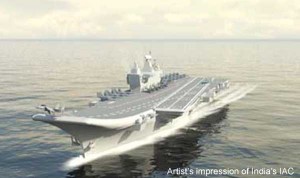
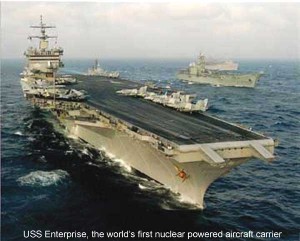
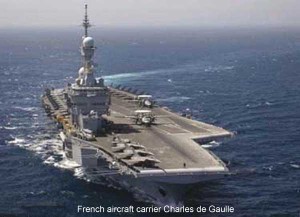
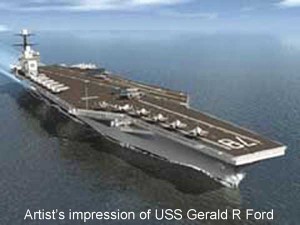
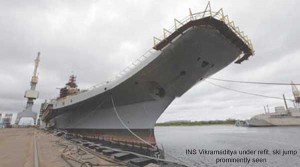
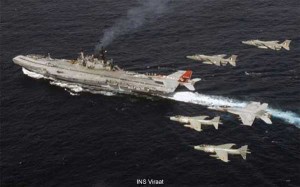
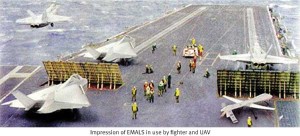

Hanji sir,I am one of your ex-navy LME.Served on board INS kirpan and Udaygiri.If you receive this message pls.contact me.I am a Canadian citizen nowadays.Thanks lot.Dilbagh singh randhawa.1974-1984.